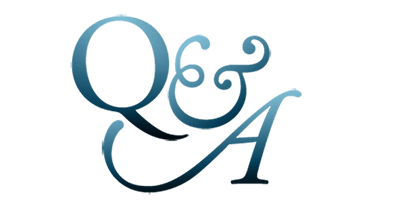LightClean UVC
FREQUENTLY ASKED QUESTIONS

What Would You Like To
Know About LightClean UVC
Sanitization Solutions?
What Would You Like To Know About
LightClean UVC Sanitization Solutions?
If you have a question not covered here please contact us and we'd be pleased to assist you in any way we can
If you have a question not covered here please contact us and we'd be pleased to assist you in any way we can
Ultraviolet radiation that is a shorter wavelength between 185nm to 280nm range that is used mainly for germicidal action to break down RNA and DNA to prevent replication of pathogens
Over 100 years. Many hospitals used UVC in operating room disinfection as early as 1937.
UVC has been largely used in professional environments such as medical establishments, laboratories, HVAC coil fouling prevention, air duct sanitization, the food industry, the beverage industry, water, and waste water treatment. Some of the largest city potable water treatment centers in North America utilize UVC to assure a safe water supply.
UVC has become more main-stream as the CONVID pandemic has raised awareness and demand for safer environments.
UVC works by two actions: either by producing ozone and free radicals that travel in air to damage the pathogens or as UVC photons directly impacting the pathogens damaging their DNA and RNA.
Ozone gas is very effective in reaching every hidden corner and destroying pathogens. It can however be a major irritant for humans. More specifically, Ozone is highly irritant for human lung and mucosa. Ozone is listed by FDA and Health Canada for use only in limited amounts.
Ozone is also a powerful oxidizing agent for many materials such as steel tools etc.
Sterilization is applicable to medical devices and means guaranteed 100% elimination of pathogens.
Sterilization devices require a medical device licence, auditing and verification protocol –– usually
used in hospitals, dental clinics and similar medical facilities.
Sanitization means seriously reducing pathogen count but stops short of a 100%
elimination guarantee. All our products offer non-medical air and surface sanitization (not sterilization).
All UVC devices and UVC device manufacturer and distributors are to register their lamps, and devices with EPA and continue to follow up with recall procedures in order to market any UVC devices in USA and Canada.
All our UVC devices have an EPA number and are placed on each device.
No Health Canada License is required for using UVC in Canada.
The number of viruses in a given volume or a space determines the likelihood of imminent infection.
Reduced Virus Load load reduces the chances of infection.
Quartz germicidal lamps can have a lifespan between 3,000 hrs to 20,000 hrs.
We utilize 16,000 hr lamps that can last as long as 20,000 hrs with 20% reduction at the end of lifespan. We utilize a number of proprietary lamps for our various models, Please consult our current price list. All our Lamps, their length, power and end fittings are proprietary and as such cannot be replaced by lamps from another manufacturer.
Most our products utilize lamps that will last as long as the equipment –– example; our UVC space 500 and space 1000 robots with 3 to 5 minute/use typically allows 1 hour to 2 hours of daily us which suggests the lamps last as long as 20 years to 30 years before replacement.
Dosage is measured in Joules or micro Joules per square cm. area to kill /destroy or seriously damage the DNA RNA or a pathogen.
For example; the listed requirement for influenza virus is 6600 micro Watts/sq.cm.
If you have a lamp that delivers at the exact location of the influenza virus you would divide 6600 by the lamp intensity (usually given in microWatts/sq.cm.)
Our UVC500 lamp at 8 feet distance delivers 155 micro Watts/sq.cm. and will destroy 99.9% of influenza virus in 43 seconds (6600/155= 43 seconds - 99.9 %)
No it is not. Suntan Beds are all tested by FDA and Health Canada to ensure they do not produce even a tiny amount of UVC.
Attempting to tan with UVC would be extremely dangerous.
UVC may damage some plants if high amounts are used directly. Our UVC air duct devices and Sanitex devices will have no harm on plants.
Expensive wall art and antiques should not be exposed to UVC.
Most Paint is not effected. Depending on fibre depth, carpet may shadow the light exposure if the light is directed from one direction only. That is why UVC is not considered as a 100% sterilization device.
People and pets should not be exposed to UVC. Clear Polycarbonate eye shields will protect eyes when UVC products are in use.
UVC light can not penetrate through ordinary glass, plastics, nylons, films.
UVC light has very limited penetration capability into plastics, substrates. UVC can only penetrate through pure quartz and teflon film.
UVC Cleaning Products are in use wherever peopler gather for any reason. A few examples:
• Clinic examination rooms between the patients
(such as Chiropractors, Physiotherapists, Naturopaths, Acupuncturists, Dermatologists, Estheticians,
• Court Houses
• Restaurants & Cafeterias
• Retail Outlets of any kind
In Use:
• Continuous air flow UVC devices
• Instant shock 3 minute upright robots
• Hand held spot UVC
• Air duct installed UVC air duct systems to reduce virus load in air constantly
• Quick 3 minute shock kill rates with upright models
• Hand held spot UVC models sanitizing surfaces , examination tables, buttons etc.
• HVAC/air handling devices against pathogens including preventing Legionaries disease
• Sports Training • Gyms • Yoga Centers
In Use:
• UVC air duct HVAC systems
• hand held spot kill devices
• after hours, upright models for quick kill in areas, bathrooms, showers, changing rooms
• Warehouse
In Use:
• floor and air sanitization for virus load reduction
Basically, any space where people gather or pass-through would be well served by UVC Cleansing routines
Ultraviolet radiation that is a shorter wavelength between 185nm to 280nm range that is used mainly for germicidal action to break down RNA and DNA to prevent replication of pathogens
Over 100 years. Many hospitals used UVC in operating room disinfection as early as 1937
UVC has been largely used in professional environments such as medical establishments, laboratories, HVAC coil fouling prevention, air duct sanitization, the food industry, the beverage industry, water, and waste water treatment. Some of the largest city potable water treatment centers in North America utilize UVC to assure a safe water supply.
UVC has become more main-stream as the CONVID pandemic has raised awareness and demand for safer environments.
UVC works by two actions: either by producing ozone and free radicals that travel in air to damage the pathogens or as UVC photons directly impacting the pathogens damaging their DNA and RNA.
Ozone gas is very effective in reaching every hidden corner and destroying pathogens. It can however be a major irritant for humans. More specifically, Ozone is highly irritant for human lung and mucosa. Ozone is listed by FDA and Health Canada for use only in limited amounts.
Ozone is also a powerful oxidizing agent for many materials such as steel tools etc.
Sterilization is applicable to medical devices and means guaranteed 100% elimination of pathogens.
Sterilization devices require a medical device licence, auditing and verification protocol –– usually used in hospitals, dental clinics and similar medical facilities.
Sanitization means seriously reducing pathogen count but stops short of a 100% elimination guarantee. All our products offer non-medical air and surface sanitization (not sterilization).
All UVC devices and UVC device manufacturer and distributors are to register their lamps and devices with EPA and continue to follow up with recall procedures in order tomarket any UVC devices in USA and Canada.
All our UVC devices have an EPA number which is placed on each device.
No Health Canada License is required for using UVC in Canada.
The number of viruses in a given volume or a space determines the likelihood of imminent
infection. Reduced Virus Load load reduces the chances of infection.
Quartz germicidal lamps can have a lifespan between 3,000 hrs to 20,000 hrs.
We utilize 16,000 hr lamps that can last as long as 20,000 hrs with 20% reduction at the
end of lifespan. We utilize a number of of proprietary lamps for our various models, please consult our current price list. All our Lamps, their length, power and end fittings are proprietary and as such cannot be replaced by lamps from another manufacturer.
Most our products utilize lamps that will last as long as the equipment –– example; our UVC space 500 and space 1000 robots with 3 to 5 minute/use typically allows 1 hour to 2 hours of daily suggests the lamps last as long as 20 years to 30 years before replacement.
Dosage is measured in Joules or micro Joules per square cm. area to kill /destroy or seriously
damage the DNA RNA or a pathogen.
For example; the listed requirement for influenza virus is 6600 micro Watts/sq.cm.
If you have a lamp that delivers at the exact location of the influenza virus you would
divide 6600 by the lamp intensity (usually given in microWatts/sq.cm.)
Our UVC500 lamp at 8 feet distance delivers 155 micro Watts/sq.cm. and will destroy 99.9% of influenza virus in 43 seconds (6600/155= 43 seconds - 99.9 %)
No it is not. Suntan Beds are all tested by FDA and Health Canada to ensure they do not produce even a tiny amount of UVC.
Attempting to tan with UVC would be extremely dangerous.
UVC may damage some of plants if high amounts are used directly. Our UVC air duct devices and Sanitex devices will have no harm on plants.
Expensive wall art and antiques should not be exposed to UVC.
Most Paint is not effected. Depending on fibre depth, carpet may shadow the light exposure if the light is directed from one direction only. That is why UVC is not considered as a 100% sterilization device.
People and pets should not be exposed to UVC. Clear Polycarbonate eye shields will protect eyes when UVC products are in use.
UVC light can not penetrate through ordinary glass, plastics, nylons, films.
UVC light has very limited penetration capability into plastics, substrates. UVC can only penetrate through pure quartz and teflon film.
UVC Cleaning Products are in use wherever peopler gather for any reason. A few examples:
• Clinic examination rooms between the patients
(such as Chiropractors, Physiotherapists, Naturopaths, Acupuncturists, Dermatologists, Estheticians,
• Court Houses
• Restaurants & Cafeterias
• Retail Outlets of any kind
In Use:
• Continuous air flow UVC devices
• Instant shock 3 minute upright robots
• Hand held spot UVC
• Air duct installed UVC air duct systems to reduce virus load in air constantly
• Quick 3 minute shock kill rates with upright models
• Hand held spot UVC models sanitizing surfaces , examination tables, buttons etc.
• HVAC/air handling devices against pathogens including preventing Legionaries disease
• Sports Training • Gyms • Yoga Centers
In Use:
• UVC air duct HVAC systems
• hand held spot kill devices
• after hours, upright models for quick kill in areas, bathrooms, showers, changing rooms
• Warehouse
In Use:
• floor and air sanitization for virus load reduction
Basically, any space where people gather or pass-through would be well served by UVC Cleansing routines
LEASING OPTIONS AVAILABLE
Pay for your LightClean UVC System while you build your business with it.
Pay for your LightCare UVC System
while you build your business with it.
